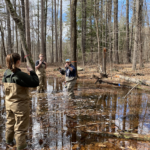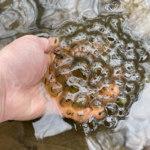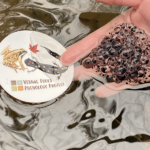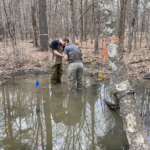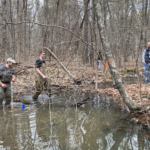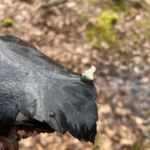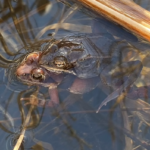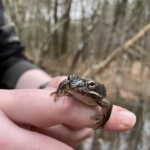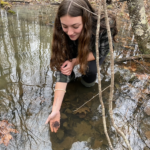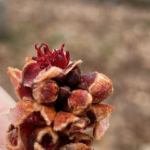Contact: Mary Beth Kolozsvary (Siena College), Jennifer Purrenhage and Dave Steinberg (University of New Hampshire), Thilina Surasinghe (Bridgewater State University)
Project E-mail: eren.vppp@gmail.com
Initiated: 2022
Project Status: Active. Accepting new participants for the Spring 2024 field season.
Description
Vernal Pool Phenology Project (VPPP): Phenological asynchrony of vernal pool-breeding amphibians and woody plants
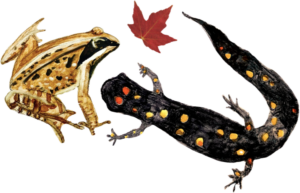
Climate change has led to changes in phenology for a range of plants and animals. Phenological changes do not necessarily happen at the same rate, magnitude, or in the same direction for co-occurring species. Mismatches in phenology can disrupt important species relationships, resulting in potential disturbances to biological communities. An excellent example is the potential mismatch in early-spring phenology of pond-breeding amphibians, such as wood frogs and spotted salamanders, and the woody plants surrounding their breeding pools. The geographic and landscape drivers of phenology–particularly with respect to pond-breeding amphibians and woody plants surrounding forest ponds–is not well understood. Moreover, spatial asynchrony in phenology is expected to manifest within a single species, and we aim to leverage the power of the EREN network to gather phenology data across a large geographic region. In the Vernal Pool Phenology Project, participants monitor phenology of amphibians and trees at small, forested ponds across time to identify potential shifts and emerging asynchronies in the timing of important life history events.
Hypotheses/Objectives:
Overarching Question:
How do local and regional factors affect the spring phenology of pond-breeding amphibians and trees?
We hypothesize that:
- Local factors are better predictors of phenology than are regional factors.
- Phenological asynchrony between plants and early spring-breeding amphibians will increase across time in proportion to the degree of environmental change.
Summary of Methods:
- Each participating institution selects at least one study pool: a small (<0.2 ha), fishless body of water (temporary or permanent ‘pool’) embedded in a forest (i.e., ≥5 individuals ≥10cm DBH of at least 3 tree species within 5m of the pool and with breeding wood frogs (Lithobates sylvaticus) and/or spotted salamanders (Ambystoma maculatum).
- Participants install a water depth gauge, temperature loggers (air and water), and AudioMoth acoustic recorders at their study pool(s).
- Participants conduct visual surveys (2x week for 6 weeks) of pools for first appearance of amphibian egg masses and plant phenophases (e.g., bud-break, flowering, leafout).
- Using trail cameras for remote monitoring of water level and wildlife visiting the study pool(s) is optional.
- Data analysis will integrate local site data and regional phenology data from the National Phenological Network.
If you’re interested in joining the project, please email us: EREN.vppp@gmail.com. We’ll be happy to share our detailed protocols and educational materials.
Expanded Project Info.
Curriculum: We’re excited to help you incorporate this project’s protocol and instructional materials into your courses. Instructor materials and student handouts are available to project participants and upon request.
Other Project Materials & Publications from this project will be listed here as available.


